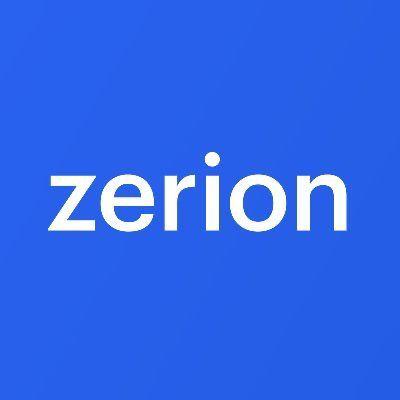
Zerion
At Zerion, we are on a mission to empower more people around the world with efficient, transparent, and censorship-resistant financial services.
PoC Required
KYC required
Rewards
Rewards by Threat Level
Rewards are distributed according to the impact of the vulnerability based on the Immunefi Vulnerability Severity Classification System V2.2. This is a simplified 5-level scale, with separate scales for websites/apps, smart contracts, and blockchains/DLTs, focusing on the impact of the vulnerability reported.
All web/app bug reports and Critical/High/Medium smart contract bug reports must come with a PoC with an end-effect impacting an asset-in-scope in order to be considered for a reward. Explanations and statements are not accepted as PoC and code is required. In addition, all Critical/High/Medium bug reports must come with a suggestion for a fix in order to be considered for a reward.
The following known issues are considered to be out of scope of this bounty program:
- All issues highlighted previously in the following audit report:
- Peckshield Audit for DeFi SDK (August, 2020): https://drive.google.com/file/d/158GG-J681xAc4d8pMibpP_SFJikX4HPM/view?usp=sharing
- Audit: https://github.com/zeriontech/defi-sdk/blob/interactive/audits/Zerion%20DeFi%20SDK%20Trail%20of%20Bits%20Audit%20Report.pdf
- External apps having integrations with Zerion
Rewards for critical smart contract vulnerabilities are further capped at 10% of economic damage, with the main consideration being the funds affected in addition to PR and brand considerations, at the discretion of the team. However, there is a minimum reward of USD 10 000 for Critical bug reports.
Critical website and application bug reports will be rewarded with the full USD 15 000 only if the impact leads to a direct loss in funds or a manipulation of the votes or the voting result, as well as the modification of its display leading to a misrepresentation of the result or vote. All other impacts that would be classified as Critical would be rewarded no more than USD 10 000.
Zerion requires KYC to be done for all bug bounty hunters submitting a report and wanting a reward. The information needed is email address, full name, and country of residence.
Payouts are handled by the Zerion team directly and are denominated in USD. However, payouts are done in USDC or DAI.
Program Overview
At Zerion, we are on a mission to empower more people around the world with efficient, transparent, and censorship-resistant financial services.
We do this by building applications, tools, and infrastructure enabling any smartphone holder, anywhere in the world, to build and manage their decentralized finance (DeFi) portfolios. The company was founded in 2016 by a technical team of crypto-native builders who sought to change the way centralized financial services work, primarily driven by experiencing the lack of financial opportunity within their countries.
Zerion has grown to become one of the most popular DeFi interfaces in the world. Since inception, Zerion has processed over $1.4 billion in transaction volume and serves more than 200K monthly active users from over 217 countries.
Zerion gives customers access to more than 50,000 digital assets, 60 protocols & all NFTs on the Ethereum blockchain through their app, which streamlines the UI of DeFi. Users can access tokens and invest through the app similar to exchanges like Coinbase or Gemini, but do so using their own personal wallets like MetaMask, meaning user funds and private keys aren’t controlled by or accessible to Zerion.
For more information about Zerion, please visit https://zerion.io/.
This bug bounty program is focused on their smart contracts, website and app and is focused on preventing:
- Loss of user funds
- Leak of user data
- Deletion of user data
KYC required
The submission of KYC information is a requirement for payout processing.
Proof of Concept
Proof of concept is always required for all severities.
Prohibited Activities
- Any testing on mainnet or public testnet deployed code; all testing should be done on local-forks of either public testnet or mainnet
- Any testing with pricing oracles or third-party smart contracts
- Attempting phishing or other social engineering attacks against our employees and/or customers
- Any testing with third-party systems and applications (e.g. browser extensions) as well as websites (e.g. SSO providers, advertising networks)
- Any denial of service attacks that are executed against project assets
- Automated testing of services that generates significant amounts of traffic
- Public disclosure of an unpatched vulnerability in an embargoed bounty
- Any other actions prohibited by the Immunefi Rules
Feasibility Limitations
The project may be receiving reports that are valid (the bug and attack vector are real) and cite assets and impacts that are in scope, but there may be obstacles or barriers to executing the attack in the real world. In other words, there is a question about how feasible the attack really is. Conversely, there may also be mitigation measures that projects can take to prevent the impact of the bug, which are not feasible or would require unconventional action and hence, should not be used as reasons for downgrading a bug's severity.
Therefore, Immunefi has developed a set of feasibility limitation standards which by default states what security researchers, as well as projects, can or cannot cite when reviewing a bug report.


